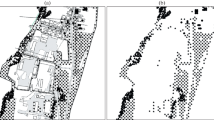Abstract
Steganalysis comprises a set of techniques that strive to find concealed information within diverse types of digital media. On the contrary, Steganography involves a group of methods that, by manipulation of a cover object, aims to hide information to make it imperceptible. Current Steganalysis techniques suffer from a certain degree of failure in the detection of a payload and, frequently, the impossibility to discover if a media hides some information. In this chapter, we prove that the detection of hidden material within a media, or a Steganalysis procedure, is an undecidable problem. Our proof comprises two sets of tests: first, we demonstrate the undecidability by the principle of Diagonalization of Cantor, and second, we applied a reduction technique based on the undecidability of malware detection. For this part, we outline the hypothesis that there exists a similitude between Steganography techniques and the generation of an innocuous computer virus. Both demonstrations proved that Steganalysis procedures are undecidable problems.
Access this chapter
Tax calculation will be finalised at checkout
Purchases are for personal use only
Similar content being viewed by others
References
A. Cheddad, J. Condell, K. Curran, P.M. Kevitt, Digital image steganography: survey and analysis of current methods. Signal Process. 90, 727–752 (2010). https://doi.org/10.1016/j.sigpro.2009.08.010
D.M. Chess, S.R. White, An undetectable computer virus, in Proceedings of Virus Bulletin Conference, Orlando, 2000
F. Cohen, Computer viruses: theory and experiment. Comput. Secur. 6, 22–35 (1987). https://doi.org/10.1016/0167-4048(87)90122-2
F. Cohen, Computational aspects of computer viruses. Comput. Secur. 8, 325–344 (1989). https://doi.org/10.1016/0167-4048(89)90089-8
D. Evans, On the impossibility of virus detection. University of Virginia (2017), https://www.cs.virginia.edu/~evans/virus/. Accessed 26 Oct 2018
J. Gutiérrez-Cárdenas, Steganography and data loss prevention: an overlooked risk? Int. J. Secur. Its Appl. 11(4), 71–84 (2017). https://doi.org/10.14257/ijsia.2017.11.4.06
J.E. Hopcroft, J.D. Ullman, R. Motwani, Introduction to Automata Theory, Languages and Computation, 3rd edn. (Pearson Education, Harlow, 2006)
S. Katzenbeisser, F. Petitcolas, Information Hiding Techniques for Steganography and Digital Watermarking (Artech House Books Inc., Norwood, 1999)
O. Khalind, J. Hernandez-Castro, B. Aziz, A study on the false positive rate of Stegdetect. Digit. Investig. 9(3), 235–245 (2013)
H. Lo, S. Topiwala, J. Wang, Wavelet based steganography and watermarking (2016), http://www.cs.cornell.edu/topiwala/wavelets/report.html. Accessed 26 Oct 2016
B. Poonen, Undecidable problems: a sampler, in Interpreting Gödel: Critical Essays, Chap. 10, ed. by J. Kennedy (Cambridge University Press, Cambridge, 2014), pp. 211–241. http://www-math.mit.edu/%7Epoonen/papers/sampler.pdf
N. Provos, P. Honeyman, Detecting steganographic content on the internet, in Proceedings of Network and Distributed System Security Symposium (NDSS), 2002
M. Sipser, Introduction to the Theory of Computation, 3rd edn. (Cengage Learning, Boston, 2013)
H. Shivaram, D. Acharya, R. Adige, P. Kamath, A secure color image steganography in transform domain. Int. J. Cryptogr. Inf. Secur. (2013). https://doi.org/10.5121/ijcis.2013.3103
M. Warkentin, E. Bekkering, M.B. Schmidt, Steganography: forensic, security, and legal issues. J. Digit. Forensics Secur. Law 3(2), 17–34 (2008)
Author information
Authors and Affiliations
Corresponding author
Editor information
Editors and Affiliations
Rights and permissions
Copyright information
© 2020 Springer Nature Switzerland AG
About this paper
Cite this paper
Gutierrez-Cardenas, J. (2020). Proofs of the Undecidability of Stegananalysis Techniques. In: Vasant, P., Litvinchev, I., Marmolejo-Saucedo, J.A., Rodriguez-Aguilar, R., Martinez-Rios, F. (eds) Data Analysis and Optimization for Engineering and Computing Problems. EAI/Springer Innovations in Communication and Computing. Springer, Cham. https://doi.org/10.1007/978-3-030-48149-0_17
Download citation
DOI: https://doi.org/10.1007/978-3-030-48149-0_17
Published:
Publisher Name: Springer, Cham
Print ISBN: 978-3-030-48148-3
Online ISBN: 978-3-030-48149-0
eBook Packages: EngineeringEngineering (R0)




